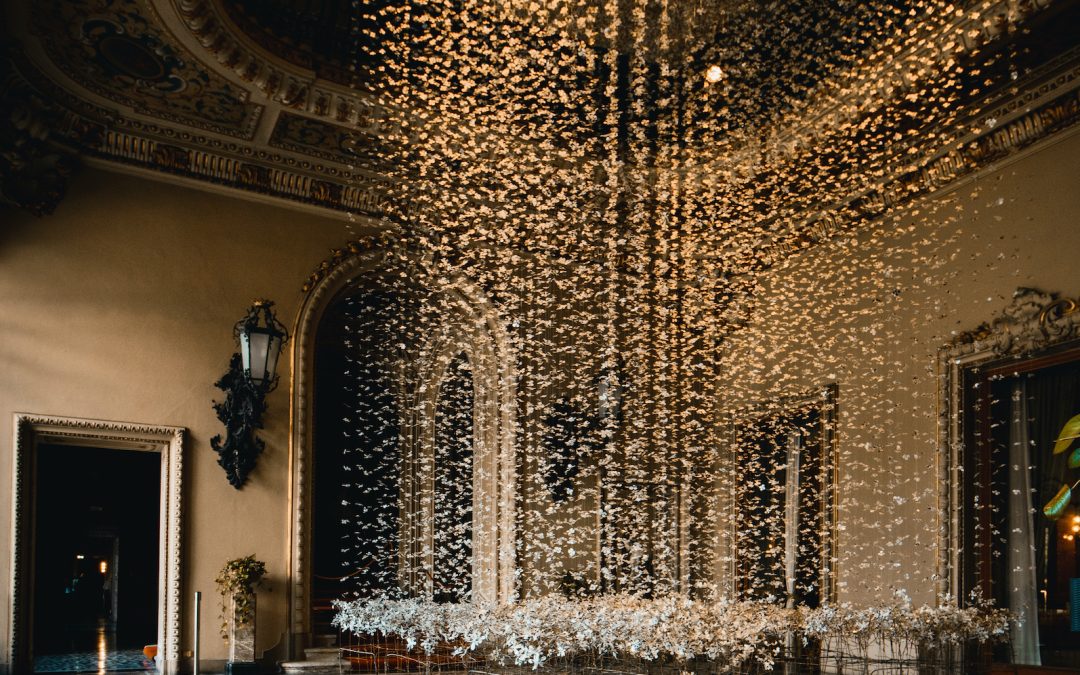1. **A Rushed Arrival at Lake Como Design Festival, but Perfect Weather**
I couldn’t have asked for better weather.
The colors of the lake in September are nothing short of spectacular and crystal clear. The picturesque backdrop of the blue sky, lush green mountains, rippling waters, and enchanting villas and gardens made this experience all the more captivating.
Lake Como Design Festival is a unique event that invites visitors to explore the artistic and architectural heritage of the region. Unlike the more business-oriented Milan Design Week, this festival takes you on a journey through historic, unknown, or forgotten places, unveiling a new cultural perspective enjoying the contamination of art , design and the settings

2. **Pliny the elder: Naturalis Historia **
This year marked the festival’s 5th edition, and what truly intrigued me was its theme:
Naturalis Historia.
Inspired by the work of Pliny the Elder, a naturalist and a natural philosopher who was born in Como in 23 AD. His work Naturalis Historia ( Natural History) was to become an editorial model for encyclopedias .
For centuries the encyclopediac work Naturalis Historia represented a fundamental source of knowledge for scientists and intellectuals, and survived in its’ entirety to the present day.
The festival beautifully blended art and design with elements related to botany, mineralogy, and zoology—themes extensively documented in Pliny’s 37-volume work, Naturalis Historia.
This seamless connection between nature, art, and design sounded like music to my ears, prompting me to spend a morning exploring various venues.
3. **Villa Olmo – Back to Nature**
I decided to start at one of the city’s most famous historical landmarks, Villa Olmo.
Here the main exhibition, “Back to Nature,” was held amidst the grandeur of the Villa, a few standout installations left a lasting impression:
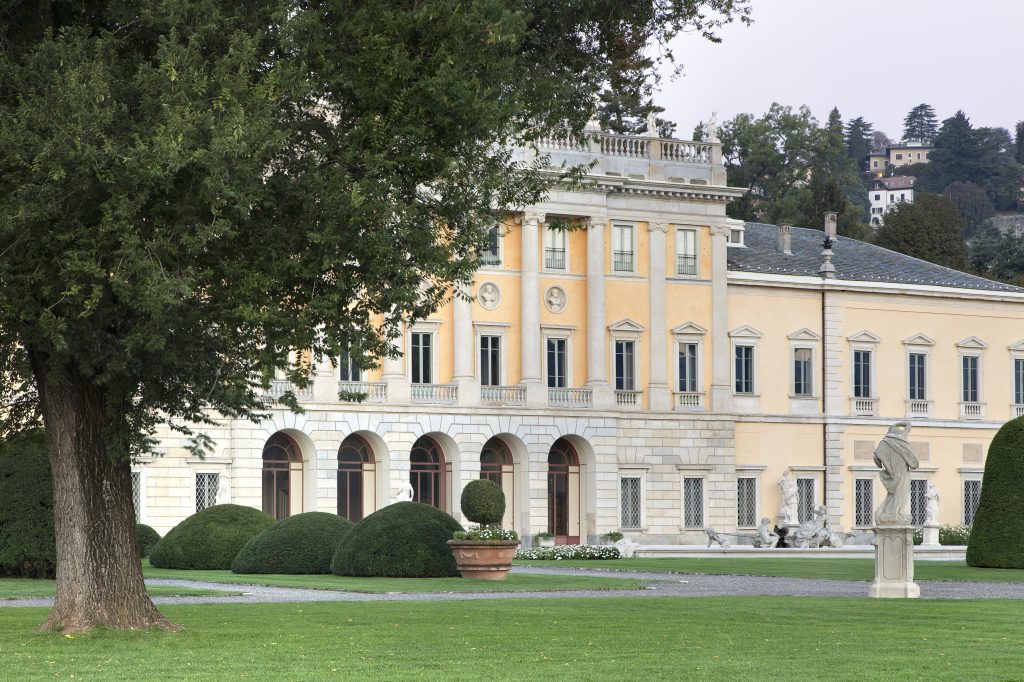

**Kris Rhus – The Second Song: Falling to Earth**
In the main entrance of the Villa the visitor was immediately greeted by Kris’s installation, featuring a mesmerizing floral reality suspended in space. This was a breathtaking introduction to what was to be expected in terms artistic offerings within Villa Olmo. As I walked through this enchanting space, I felt like I was floating in a sea of flowers, a moment of tranquility and wonder; already nature was taking the stage.
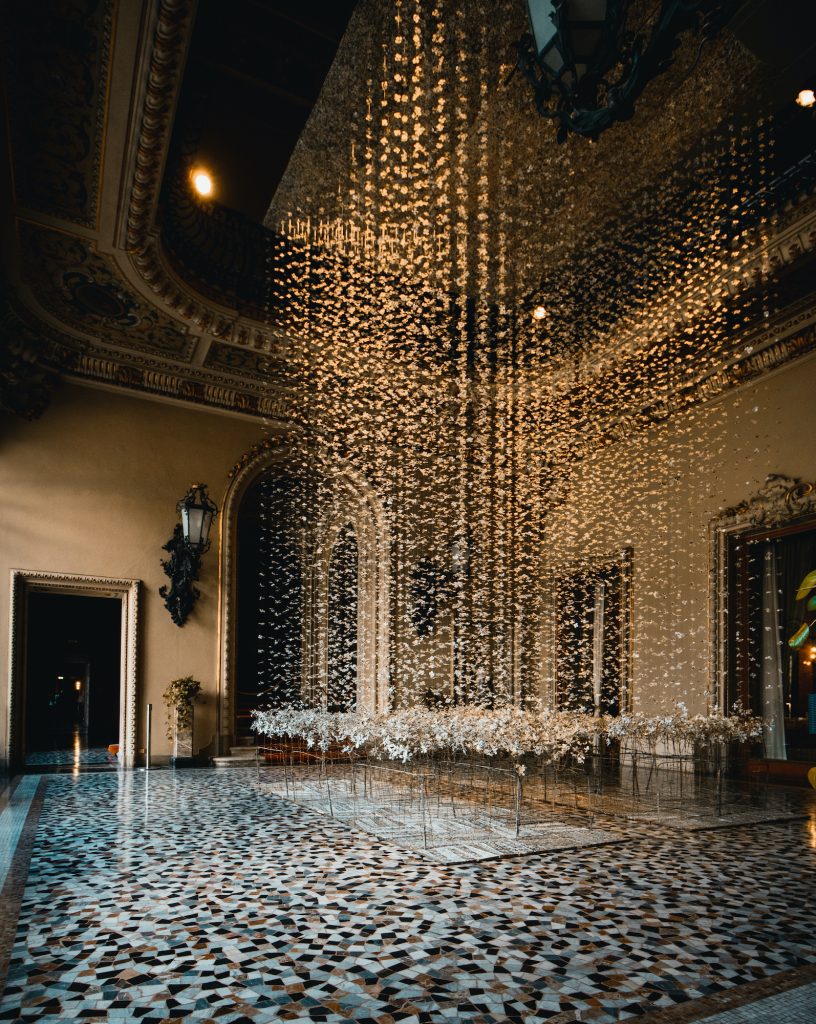
**ETEL – The Curved Nature of Oscar Niemeyer**
Niemeyer is a name that makes we with startle with delight . ETEL, a renowned ambassador of Brazilian design, showcased the “Baixa Lounge Chair,” designed by Oscar Nieymeyer at the begining of the centuary.; this piece effortlessly bridges the gap between nature and human creation. The chair’s curves and materials evoked in me visions of lounging in the heart of the Amazon rainforest, surrounded by the harmonious sounds and scents of nature.
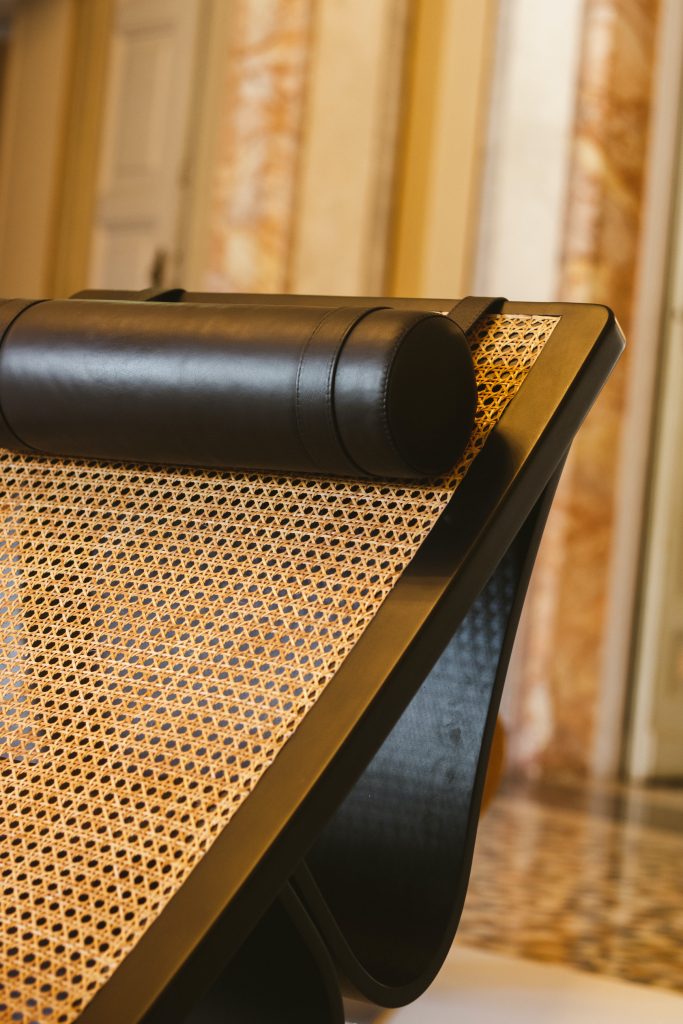

**Grieder Contemporary Gallery – Mumo Forest by **
I am a sucker for glass, I have visited extensively the furnaces in Murano and beyond and I never fail to be mesmerized infront of this matter and its alchemical properties.
Mumo Forestby Austrian artist Melli Ink, featuring glass sculptures inspired by mushrooms and mandrake roots, fascinated me with its exploration of mycelium and its dual nature—both healing and poisonous. The transparent glass pieces captured the delicate essence of these natural elements, inviting viewers to contemplate the complexities and the order of the natural world.

After completing my tour of Villa Olmo exhibition , I took a stroll in the gardens and along the lake side – to be honest I got slightly distracted . after all nature in its pure form is the highest form of art itself.

Of the many venues of the Lake Como Design festival, and considering my limited time available, I knew exactly where my next stop would be :
4. **Stories of Fabrics_ San Pietro in Atrio**
This exhibition was held at San Pietro in Atrio purposely one to the public for the event. The building, dating back to 1200, was connected to the nearby Basilica of San Fedele
I was particularly drawn to the textile exhibitions, for two compelling reasons:
The First being that weaving and in particular silk weavings and printing is very much part of the cultural heritage of the area and still today Como remains the capital of beautiful silks.
The second being that textiles are so important in our environment and can be very natural but also very harmful for people and planet, so I was curious to see what was on show.
Here are my favourite take aways:
**Mariantonio Urru **
A Sardinian textile artisan and artist. I particularly liked the way she has evolved in designing modern and timeless design and at the same time safeguarding the traditional Sardinian techniques. Following an innovative path, she created unique handmade and jacquard fabrics, linking past and present, innovation and tradition all whilst respecting the natural elements of the fibre.
On this occasion she presents three poufs in natural fibers and stuffing based on aromatic herbs, and Fuoco Nero, a carpet designed by Anna Galtarossa. The carpet was created within the framework of the Tinto in Pecora project, focused on the creation of colors derived from the natural wool of local sheep from which a final palette of seven colors is obtained, ranging from ecru to dark moretto. Fuoco Nero is the black soul that burns and transforms, fire of ash and inverted elements.

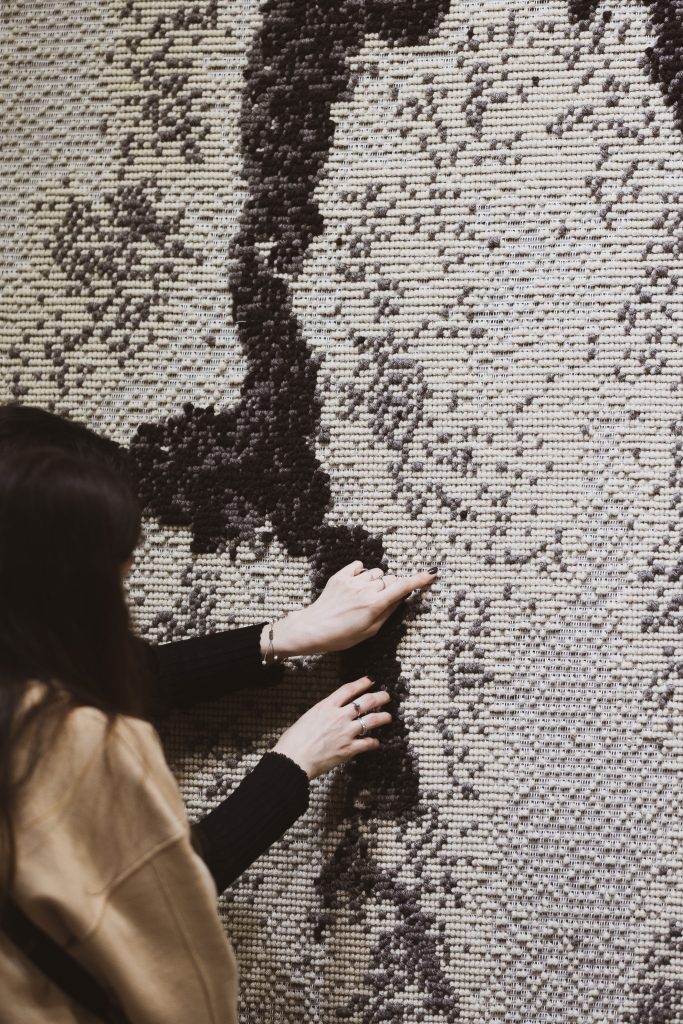
**Milla Novo**
This was by far my favourite of the entire festival and I really felt drawn to it.
Milla is a Netherlands-based artist, here she specialized in the creation of wall-hangings for high-end interiors, presents two large hand knotted artworks. The first one is a metallic wallhanging representing the Pillan, considered the symbol for ancestral spirits by the indigenous Mapuche people of Southern Chile, from which she descends. The second piece of work – Tierra Emocional, created in collaboration with her creative partner NovoArt, belongs to the “opeWorks collection. As a sustainable item, made of leftover materials from the wall–hanging collection, this work represents the pain earth is feeling as a result of modern society not having taken care of the environment. Despite the cry for help, she has one eye shining a positive light on us all and is still optimistic for our future.
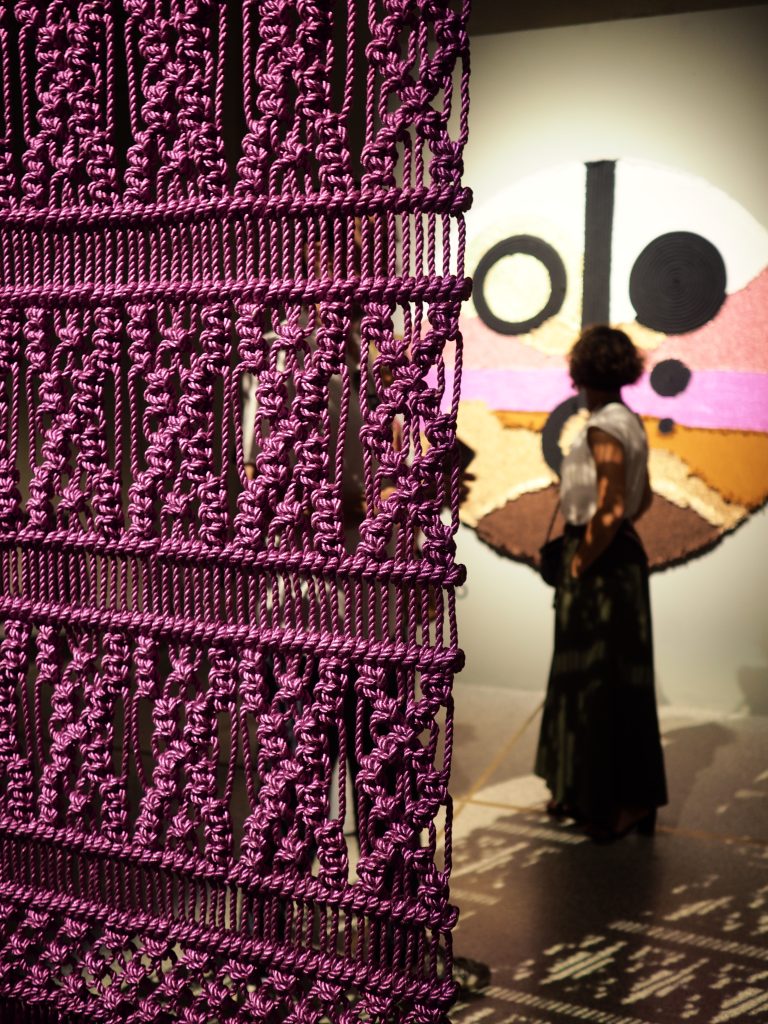

**Tracce – ruga.perissinotto**
Lastly I feel I really must mention ruga persinotti; essentially his close link to nature and our relationship that goes beyond any artistic inclination and really speaks to our core in connection to the earth.
The works Tracce is ruga.perissinotto’s investigation into the rediscovery of the historic wools of the north-east of Italy – that of the Alpagota sheep and the Lamon sheep -, of a culture that has deep roots in its territory, made up of ancient values and wise gestures. Fundamental to the revaluation of this raw material where the wool in bales and cardes, is spined and weaved without any dyeing process. For the Lake Como Design Festival, ruga.perissinotto recreated the structure of a moltrìn, an enclosure for milking sheep, which together with the casèra and the stalòn made up the classic Italian mountain huts. The Lamon wool structure invites visitors to enter and rediscover the Belluno textile tradition of which ruga.perissinotto is an ambassador.

My morning at Lake Como Design Festival was a short whirlwind of creativity and inspiration. From the beautiful september atmosphere with lush landscapes to the thought-provoking art and design, I left with a deeper appreciation for the intricate relationship between nature and human expression. This experience will serve as a reminder of the boundless beauty and creativity that thrive in the embrace of our natural world.
If you would like to know a bit more about the Lake Como Design Festival, (some exhibitions have been extended) Check out
Lake Como Design Festival | home
And if you a planning a trip for next year – Septemeber is the best month to visit the lake
AL PHOTO CREDITS LCDF
